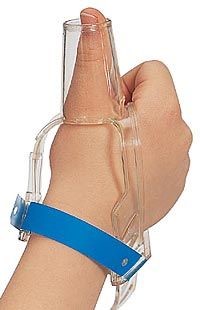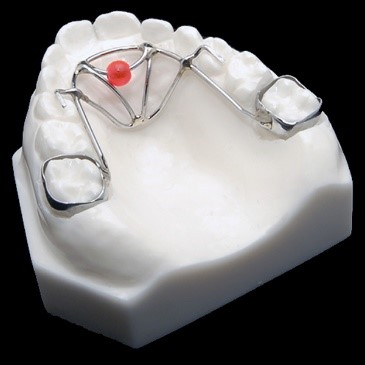The thumb and finger habits make up the majority of the oral habits. The effects on the dentition is dependent on the intensity (amount of force), duration (time spent) and frequency (number of times throughout the day) of the habit. Duration plays the most critical role in tooth movement in digit habit. It takes 4-6 hours of force per day to cause tooth movement. Thus, a child who sucks intermittently with high intensity may not produce much tooth movement at all, whereas a child who sucks continuously can cause a significant change. Symptoms of an active habit are 1. anterior open bite 2. Facial movement of the upper incisors and lingual movement of the lower incisors 3. Upper jaw constriction (narrowing).
Timing of treatment is critical. A child should be given the opportunity to stop the habit naturally before eruption of the permanent teeth, thus treatment is performed between age 4 and 6 years. The approaches are:
-
- Reminder therapy: This gives the willing child the opportunity to quit but needs a little help. For example, the use of a band aid or ill-tasting solution painted onto the sucking digit.
- Reward system: In this the child agrees to stop the habit for a certain length of time and receives a reward if accomplished. The reward should be special enough to give the child incentive to quit. The more involved the child is the better the chance for success. This can involve the use of stickers being placed on a calendar at the end of the day when the habit is not conducted.
3. Appliance therapy: This is used if the habit persist following reminder and reward therapy and the child truly wants to stop the habit. The appliance physically discourages the habit by making it difficult to suck the digit. The parent and child should be informed that this is not a punishment but rather a permanent reminder.


